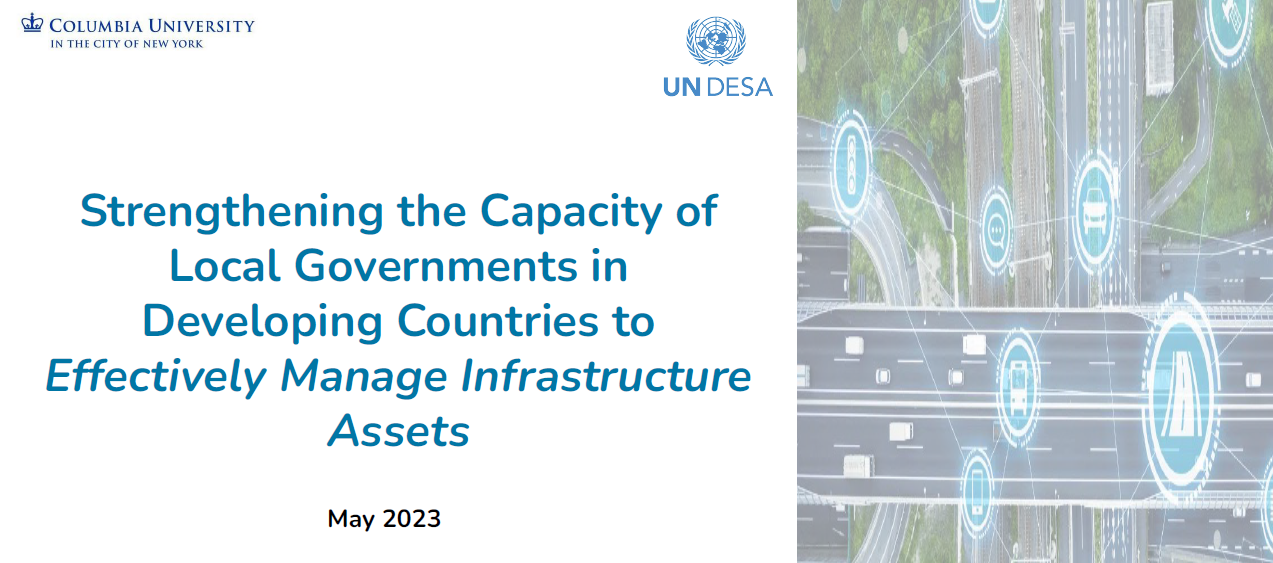UN Capstone Projects
The UN Infrastructure Asset Management (IAM) Team, in collaboration with Columbia University, is implementing Capstone Projects on Infrastructure Asset Management. This project enables students to conduct research on IAM in collaboration with FSDO/UNDESA. The materials are available by clicking on the links below:

Infrastructure projects in developing countries often don’t account for maintenance and risk administration costs, to the detriment of their long-term success. To guide national and sub-national governments in efficiently managing their assets, the UN Department of Economic and Social Affairs (UN DESA) and the UN Capital Development Fund released the joint publication "Managing Infrastructure Assets for Sustainable Development: A Handbook for Local and National Governments."
To complement the Handbook's contributions, Columbia’s Capstone Team conducts in-depth research into replicable, sustainable models for infrastructure asset management. The research aims to identify innovative and sustainable financing solutions for municipalities to support IAM throughout its entire lifecycle. The effectiveness of these solutions is addressed through the examination of four case studies: 1) Rio de Janeiro, Brazil's enhancing of PPP financing and scope to finance the Smart City project; 2) Beijing, China's PPP funding and sustainable management of Metro Line 4; 3) Pune, India's implementation of the Expressway Intelligent Traffic Management System (ITMS); and 4) Haikou, China's franchising of food waste disposal by introducing foreign advanced technology.
The findings include the importance of notable financing and technological components in improving local governments' asset management, revenue generation, and operational efficiency. The research concludes that robust governance frameworks, innovative financing structures, competitive bidding, cost control, predictable revenue generation, and best practice adaptation are crucial for project success and long-term sustainability.

Recognizing the funding gaps that exist in the planning, acquisition, usage, and disposal stages of an infrastructure asset, this report highlights good practices available to their infrastructure managers (at the national and sub-national levels) which could be embedded across the infrastructure assets’ lifecycle, to optimize its financial management and maintenance. The report aims to integrate the resource implication of the UNDESA Handbook on “Managing infrastructure assets for sustainable development” into financial and operational plans.
Using two case studies detailing the management of assets in China and Costa Rica, this report highlights notable financial strategies and practices used to fund infrastructure asset management (IAM). The research methodology is based on informational interviews of IAM field experts and desk research. The primary research interviews have been conducted with officials from, but not limited to, the Inter-American Development Bank and AVIC Fund Management.
To address the funding gap for IAM operations and maintenance, the report concludes by suggesting topics for future consultations of IAM experts, to be initiated by UNDESA, in order to optimize IAM governance, financial performance, and impact aligned with the SDGs.